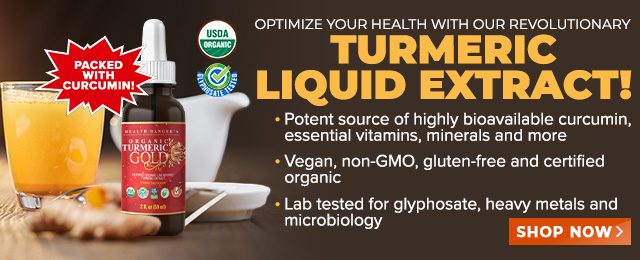
Nopal cactus (prickly pear) is rich in antioxidants, plus it helps normalize cholesterol and blood glucose
Friday, February 17, 2012 by: Donna Earnest Pravel
Tags: nopal cactus, antioxidants, blood glucose
- TAKE IT DOWN Act advances in Congress amid free speech concerns
- Gardening tips: 15 Simple tricks to double your garden’s yield this season
- Survival 101: Dangerous places to avoid when disaster strikes
- Nature’s arsenal: How plant compounds power military survival and healthcare in crisis
- Hospital staffers sound alarm after 10 nurses were diagnosed with BRAIN TUMORS
- Kawasaki unveils rideable ROBOT HORSE powered by hydrogen
- DOJ and ATF kill Biden’s “Zero Tolerance” firearms dealer policy
- Criminal referral requests filed against Fauci and top COVID officials in seven states
- Amazon's Kuiper satellite launch delay highlights uphill battle against Musk's Starlink
- New studies ignite debate: Fluoride linked to autism and ADHD, prompting calls for policy reassessment
- Barley: A nutrient-dense ancient grain with modern benefits
- “Prepare Tribe: Prepare, Protect, Provide” on BrightU: How to build a disaster-proof shelter in the middle of nowhere
- Widespread social and economic unrest: Steve Quayle issues urgent financial warning of imminent asset collapse in new interview with Mike Adams
- Sovereign debt paradox: U.S.-China mutual holdings fuel geopolitical tensions
- Israeli lobbyists boast of controlling US national security policy in leaked AIPAC audio
- Analysis: The coming economic collapse, a mass uprising and Trump's three secret weapons to halt the growing revolt
- Aerosolized bioweapons? Strange “diploid biomasses” falling out of the sky in Florida captured under the microscope
- Federal appeals court authorizes DOGE access to Education, Treasury and OPM records
- Tulsi Gabbard leads charge against the Biden regime’s global censorship of the 'Disinformation Dozen'
- Fauci is back in the limelight, and he’s busy promoting a future COVID or FLU pandemic
- Aerosolized bioweapons? Strange “diploid biomasses” falling out of the sky in Florida captured under the microscope
- Analysis: The coming economic collapse, a mass uprising and Trump's three secret weapons to halt the growing revolt
- Widespread social and economic unrest: Steve Quayle issues urgent financial warning of imminent asset collapse in new interview with Mike Adams
- Kiss Your Genetic Privacy Good-Bye! 23andMe Gets Green Light to Sell Your Intimate Genetic Details to Anyone They Want
- Tulsi Gabbard takes aim at censorship: Justice for the ‘Disinformation Dozen’
- Mike Adams releases country western hit single: Goin’ Back in Time is Comin’ Home
- U.S. lawmakers investigate Meta over alleged China collaboration
- CLOT SHOT PLANDEMIC UNFOLDING: Fibrous, rubbery clots caused by covid injections have prion-like seeding activity
- Chemtrails unveiled: How the CIA and Big Business are manipulating the weather for profit
- How Israeli military-connected corporations are secretly controlling your online privacy
- European Court of Justice: Healthcare professionals who promoted or administered COVID-19 vaccines are CRIMINALLY LIABLE for any harm caused
- DEATH by VACCINE or face PRISON time: Canadian Freedom Convoy leaders CONVICTED for protesting forced vaccination during the Covid Plandemic
- Defunding DEADLY mRNA jabs: Government funding for mRNA technology being scrutinized and sidelined until proven "safe and effective" for real
- Federal employees whine over DOGE's new directive requiring them to do a 5-point summary of weekly accomplishments
- U.S. approves new Russian ambassador as diplomatic thaw continues
- Curcumin’s ancient healing power supercharges muscle recovery, and its effects are compounded with anti-inflammatory foods and supplements
- Newly released JFK files reveal Pentagon's role in creating Lyme disease and covid in the same lab
- Analysis: The coming economic collapse, a mass uprising and Trump's three secret weapons to halt the growing revolt
- Mike Adams releases country western hit single: Goin’ Back in Time is Comin’ Home
- Aerosolized bioweapons? Strange “diploid biomasses” falling out of the sky in Florida captured under the microscope
- Kiss Your Genetic Privacy Good-Bye! 23andMe Gets Green Light to Sell Your Intimate Genetic Details to Anyone They Want
- Dr. Mike Yeadon releases 15-minute testimony - WATCH - about genocidal intent of COVID “vaccines”
- Trump reverses course on Gaza plan, says “nobody is expelling Palestinians”
- MEDICAL BOMBSHELL: FDA admits Covid mRNA 'Vaccines' CAUSE CANCER
- European Court of Justice: Healthcare professionals who promoted or administered COVID-19 vaccines are CRIMINALLY LIABLE for any harm caused
- The Health Ranger releases “Vaccine Zombie” song and music video, using AI-animated zombies for the music video
- 5 Simple steps to boost your brainpower: How to strengthen executive function in a distracted world
- A lack of integrity in Academia: Harvard professor found GUILTY of fraudulent research to promote CRT theory
- Federal employees whine over DOGE's new directive requiring them to do a 5-point summary of weekly accomplishments
- EPA advisor admits the agency is funneling billions to climate groups ahead of Trump’s return to White House
- California's social media censorship law struck down: A victory for free speech or a threat to online safety?
- Space war brewing? Russia threatens to destroy Starlink satellites
- Survival 101: Effective EMF blocking techniques
- Rep. Nancy Mace introduces bill to ban biological males from female facilities on federal property
- Red Cross issues warning to stop blood plasma donations from vaccinated people
- Scientists confirm: GENIUS brain function can be spontaneously unleashed in humans without any apparent cause
- EPA advisor admits the agency is funneling billions to climate groups ahead of Trump’s return to White House
- HYSSOP: What research reveals about the health benefits of this ancient holy herb
- Two containers with completed ballots fall out of truck in Florida
- Newly released JFK files reveal Pentagon's role in creating Lyme disease and covid in the same lab
- Global leaders unite to clamp down on “misinformation” with UN-backed Cascais Declaration
- BREAKING: 2025 NDAA authorizes mandatory military draft of WOMEN across America… as Pentagon pursues global NUCLEAR war with both Russia and China at the same time
- Michael Yon warns of a ZIONIST TAKEOVER in Trump’s second administration
- Ozempic and Wegovy weight loss drugs are injectable LIZARD VENOM PEPTIDES that may unleash a devastating wave of organ failure… side effects align with symptoms of SNAKE BITES
- The Health Ranger releases “Vaccine Zombie” song and music video, using AI-animated zombies for the music video
- Mike Adams releases country western hit single: Goin’ Back in Time is Comin’ Home
- BOMBSHELL: DNA testing kits are a SCAM to develop ethnic-specific bioweapons
- Israeli soldiers accused of even more torture and abuse in the West Bank
- These 13 countries just signed an agreement to engineer a global FAMINE by destroying food supply
- NASA admits that climate change occurs because of changes in Earth’s solar orbit, and NOT because of SUVs and fossil fuels
- Fully vaccinated about to see “tsunami” of illness and death, warns virologist
- RFK Jr. clears key hurdle: Sen. Susan Collins backs controversial HHS nominee, signaling a new era for health policy
Nopal cactus can be prepared in numerous ways or eaten raw
Nopal cactus, known in Spanish as nopales, is an easy vegetable to add to a variety of recipes. The spines are cut off of the pads, the pads are chopped or sliced, then sauteed with scrambled eggs or added to omelets. Nopal cactus is often added to pico de gallo, a fiery Mexican raw vegetable medley made with tomatoes, onions, jalapeno peppers, and cilantro. It can be served grilled or sauteed with onions as a garnish for fajitas, or eaten raw in salads.The neon red prickly pear, the fruit of the nopal cactus, tastes like a cross between bubblegum and watermelon. To prepare prickly pear, the spines are cut off and the skin is removed. This leaves the flesh and seeds of the fruit. Both are edible raw as is, or can be juiced and added to beverages and other recipes.
Nopal cactus may be considered a super-food due to its cholesterol-lowering capabilities
While Mexicans have been enjoying nopal cactus for centuries, the vegetable is trending as a super-food in the natural health and raw food community in the U.S. This may be because of medical research in the past decade which confirmed that nopales has the ability to lower LDL cholesterol levels. A 2003 medical study published by Nuclear Medicine Review: Central and Eastern Europe demonstrated that ten patients with high blood cholesterol levels were given dietary counseling for six weeks, then asked to eat prickly pear cactus for six weeks. The scientists found that these patients' livers were able to handle the regulation of LDL cholesterol significantly better by eating prickly pear cactus.Nopal cactus fruit may also be considered a super-food because of its antioxidant properties
Prickly pear fruit has gained interest in the scientific community recently because it may contain the richest source of betalains in the plant kingdom. Betalains are phytochemicals which are unique to nopal cactus, beets, and Swiss chard. It is the chemical which gives these vegetables their ruby red color. Betalains are glycosides, which means they help to reduce blood glucose levels. Medical research performed in the 1990's showed the benefits of nopal cactus for diabetes.The antioxidant properties of betalains protect the inner lining of blood vessels and the lymph system. A 2004 clinical study published in Annals of the New York Academy of Sciences states that the betalains in prickly pear were clearly demonstrated to protect vascular endothelial cells from the free radical effects of redox alteration from cytokines, the "signal" proteins that regulate the immune system.
Sources for this article include:
Pubmed.gov, "Prickly pear induces up-regulation of liver LDL binding in familial heterozygous hypercholesterolemia," B. Palumbo, et al. Nuclear Medicine Review: Central and Eastern Europe 2003; 6(1): 35-9. http://www.ncbi.nlm.nih.gov/pubmed/14600931
Simply Recipes.com, "How to Cut and Prepare Prickly Pears," by Garret McCord http://simplyrecipes.com/recipes/how_to_cut_and_prepare_prickly_pears/
Pubmed.gov, "Antioxidant betalains from cactus pear (Opuntia ficus-indica) inhibit endothelial ICAM-1 expression." C. Gentile, et al. Annals of the New York Academy of Science; 1028: 481-6. http://www.ncbi.nlm.nih.gov/pubmed/15650274
About the author:
This article is provided courtesy of Donna Earnest Pravel, owner and senior copy editor of Heart of Texas Copywriting Solutions.com. Get free weekly tips on natural healing and herbs by visiting her blog, Bluebonnet Natural Healing Therapy.
Nopal cactus at FETCH.news
Get independent news alerts on natural cures, food lab tests, cannabis medicine, science, robotics, drones, privacy and more.
Take Action: Support Natural News by linking to this article from your website
Permalink to this article:
Embed article link: (copy HTML code below):
Reprinting this article:
Non-commercial use OK, cite NaturalNews.com with clickable link.
Follow Natural News on Facebook, Twitter, Google Plus, and Pinterest
Science News & Studies
Medicine News and Information
Food News & Studies
Health News & Studies
Herbs News & Information
Pollution News & Studies
Cancer News & Studies
Climate News & Studies
Survival News & Information
Gear News & Information
News covering technology, stocks, hackers, and more



"Big Tech and mainstream media are constantly trying to silence the independent voices that dare to bring you the truth about toxic food ingredients, dangerous medications and the failed, fraudulent science of the profit-driven medical establishment.
Email is one of the best ways to make sure you stay informed, without the censorship of the tech giants (Google, Apple, Facebook, Twitter, YouTube, etc.). Stay informed and you'll even likely learn information that may help save your own life."
–The Health Ranger, Mike Adams












































